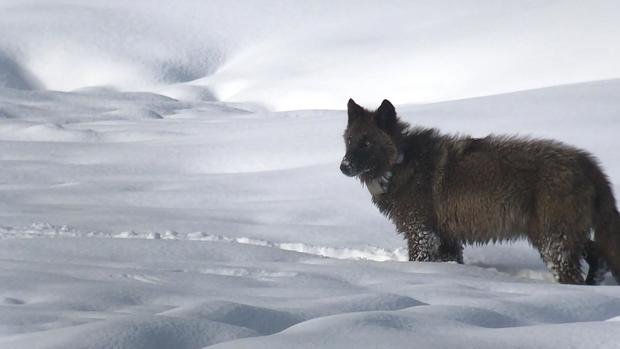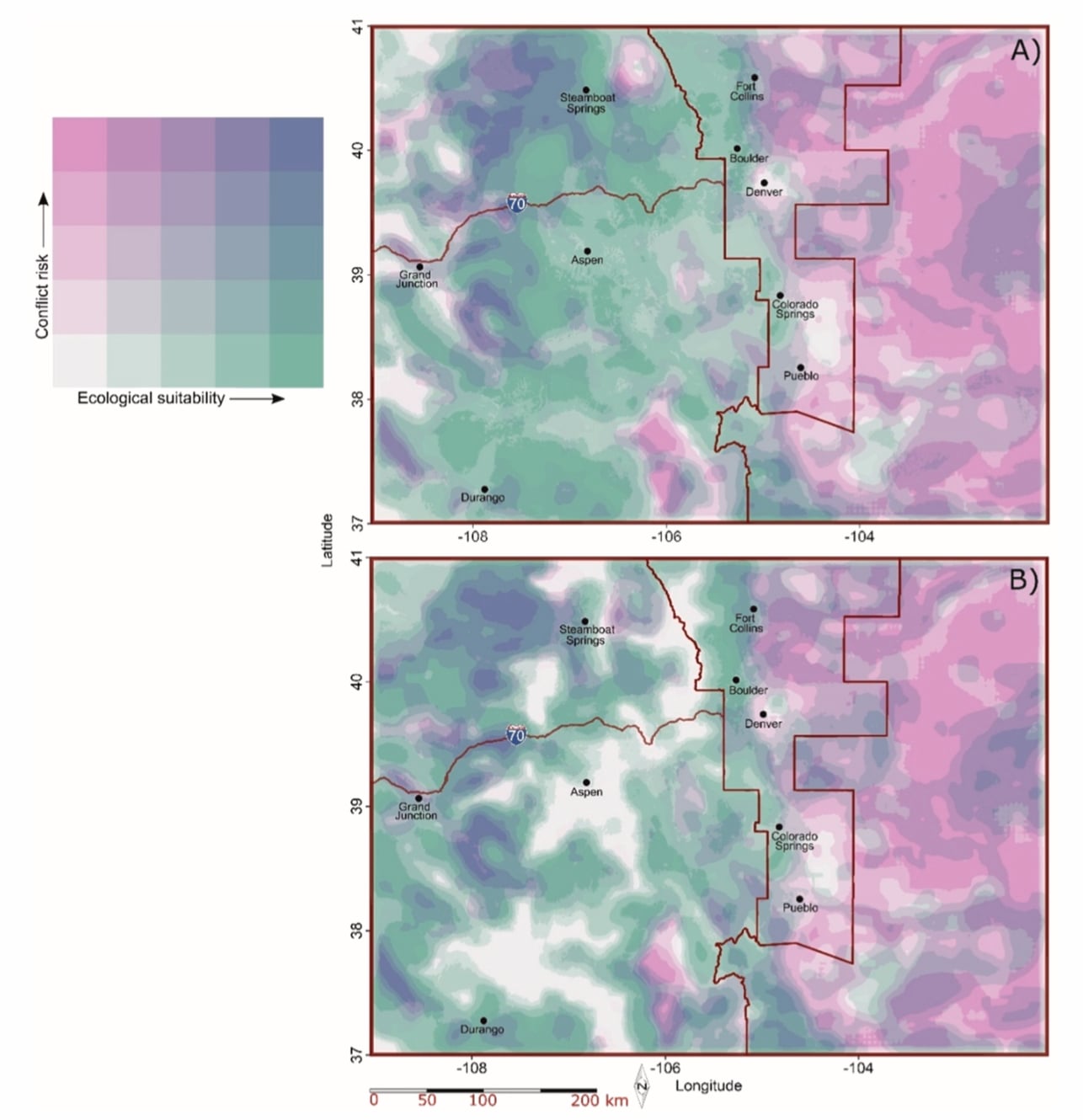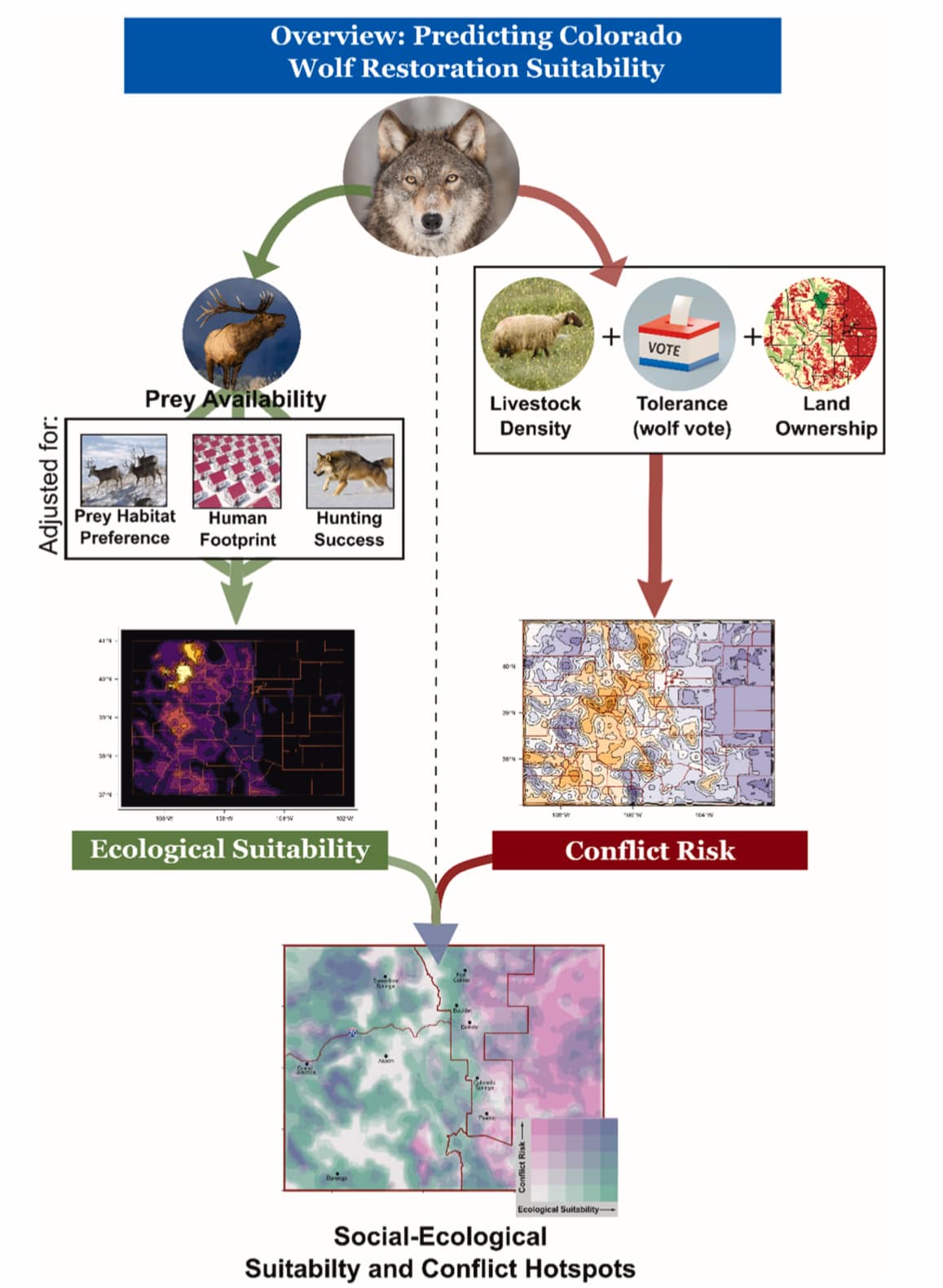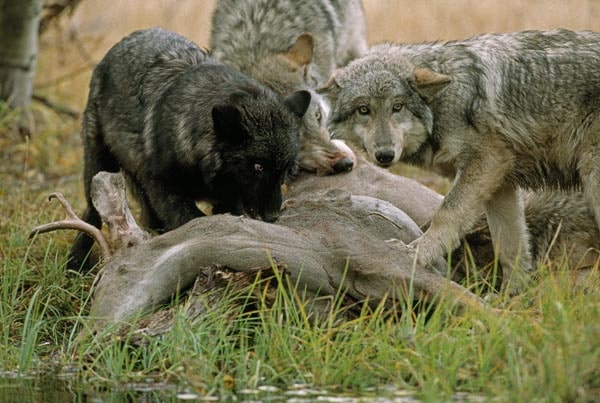
The project to reintroduce the grey wolf to Colorado is taking shape. Two years ago a public vote was held in favor of wolf reintroduction and following preparations by the Colorado Parks and Wildlife (CPW), plans are becoming more concrete, with the proposed map for a release of several packs including popular ski areas like Aspen or Crested Butte. The release is not anticipated until the second half of 2023. Currently, a draft plan will be reviewed in December, which will go out for public comment in January and February 2023. The commission will get the final plan back in April and will vote on it in May 2023.

The reintroduction of grey wolves is not without controversy. A wolf-pack has migrated in the past few years across the border from Wyoming into Wade, CO, however, it has not managed to take a strong foothold in Colorado as of yet. The pack consists of only about eight wolves and has not grown or spread in the last two years. CPW has been monitoring the adults in the pack with a tracking collar. However, stories of wolves killing dozens of cattle in Colorado have emerged in recent weeks and have had ranchers and other citizens concerned about adding more packs to the region. However, CPW was quick to point out that the recent killings are still under investigation and that currently there are no indications that these killings were done by wolves.
“Once wolves get mentioned, it’s pretty hard to get them out of the story and then it takes on a whole life of its own,” Ed Banks was quoted by the Coloradoan. Banks oversaw the U.S. Fish and Wildlife Service’s grey wolf recovery program in the Northern Rocky Mountains and calls the killing of that many calves unusual. “Everyone needs to just breathe and let them [CPW] figure it out,” he concluded.
While it is understandable that the deliberate reintroduction of a formerly eradicated apex predator will have emotions flying high, SnowBrains wanted to have an objective look at how likely any skier or boarder would be on actually encountering a wolf.
Where will the wolves likely be reintroduced?
The reintroduction of the grey wolf has been carefully planned over the last two years. Dr. Mark Ditmer, who specializes in Movement Ecology and Human-Wildlife conflict, and Dr. George Wittemyer, Professor of Fish, Wildlife, and Conservation Biology at Colorado State University, were tasked to find the best areas. In their joint paper “Defining ecological and socially suitable habitat for the reintroduction of an apex predator,” they outline the approach used to define the habitats earmarked for reintroduction. The analysis included ecological aspects, such as the availability of appropriate prey — namely elk, mule deer, and white-tailed deer — , the topography for hunting grounds — wolves avoid steep areas as they are ‘coursing predators’, which means they kill their prey on the run.
Steep hills, like you would find in a ski resort, make this form of hunting too difficult and thus will not attract packs of wolves. The aforementioned analysis was overlayed with conflict-risk aspects, like avoiding areas where there was a lot of livestock and private land ownership as well as votes in opposition to the wolf restoration project. By overlapping these two aspects on a map, the team defined the preferable area for releasing groups of grey wolves next year. The team identified that nearly 56% of the combined northern and southern Western Slope, an area of approximately 32.5 million acres, was relatively suitable for the release.

The human conflict potential plays a large role in the decision-making for the wolf release. A successful project is only possible if it is as safe as possible for ranchers and residents as well as the wolves. It is in no one’s interest to release wolves near ski resorts or other densely populated areas. CPW also included a 60-mile-buffer to Wyoming because they can be legally killed in that state, whereas wolves in Colorado are currently protected and can only be killed with prior permission, except to protect human life. In October it was suspected three female wolves, the first to be born in Colorado in over 80 years to a pack that had migrated from the north, were shot 10 miles across the state border into Wyoming.
The CPW plan for the grey wolf reintroduction foresees three different phases. Colorado is currently in Phase 1, where the minimum count is below 50 wolves and grey wolves are deemed as near extinct therefore shooting them without prior permission is prohibited. Once that minimum count hits 50, Colorado would declare Phase 2 and wolves would be “downgraded” to a “state threatened” species. Once the minimum count exceeds 150 for two successive years or a minimum count of 200 with no time limit, grey wolves would be deemed as no longer threatened.
So even if wolves will have been released in time for the 23/24 ski season, CPW is not planning on releasing hundreds of wolves in the middle of populated areas. There will likely be only about 50 individual wolves or about 7-8 different packs for the next few years and they will be released far away from any ski resort. Wolves require 10 square miles per wolf for hunting. As wolves hunt in packs and a pack typically consists of seven to eight wolves, a pack will therefore require 70-80 square miles. So the released packs would occupy about 560 square miles of a 32.5 million acre area identified by CPW. These release areas were carefully chosen along the guidelines mentioned and even while wolves may migrate, they will not seek a territory that is close to humans. Therefore CPW is confident they can manage the movements of individual wolf packs fairly well. They are also planning on monitoring movement with electronic collars.
How to avoid wolves
Your odds of encountering a wolf while skiing or boarding are extremely low as wolves are afraid of people and typically try to avoid humans where possible. Even with the impending reintroduction of the grey wolf to Colorado, the probability of facing a wolf remains minuscule. The CPW went to great lengths to choose locations for the release that are not populated. While technically some of these areas include ski regions like Aspen or Crested Butte, the wolves will not be released near human settlements and certainly not near resorts. Furthermore, ski runs do not provide an area they would typically hunt in as they are too steep and open and, most importantly, lack the population of prey in big herds.
Wolves have a very specific hunting style. They will stalk a herd of elk or deer for a while before making their move. They will identify the weak and vulnerable and will attempt to isolate them from the herd, often by leading them into territory hard for hoofed animals to navigate, such as snow or riverbeds. Wolves have paws that don’t sink into the snow, making it ideal hunting ground for them. They are reliant on the pack for the kill and quite vulnerable to the hooves and antlers of their prey, so they take their time to identify the most opportune moment. None of these factors would encourage a wolf pack to venture into ski resorts.

What to do if you encounter a wolf
In the extremely unlikely event that you encounter a wolf, biologist and wolf-expert Oliver Starr, who has survived a wolf attack, has given some helpful tips. His number one advice is: Do not run! Wolves are what is referred to as ‘coursing predators’, which means they are hard-wired to take their prey on the run. If you run, you will trigger their reflex to chase, and there is no chance you can outrun a wolf. The best thing you can do is to face off against the wolf and make yourself as big as possible. You can throw stones, wave clothes above your head, and shout. If you happen to carry a gun, shoot in the air as this is very successful in sending a wolf running.
Try your best to not fall, especially if you are in uneven or hilly terrain. This again will trigger the wolf’s instinct to go for weak prey. Do not turn your back on the wolf as they typically will attack from behind. Avoid, if possible, looking a wolf straight in the eye as this is perceived as aggression, which could trigger a defense mechanism. Try to instead back away from the wolf slowly (again, making sure not to trip and fall). Most importantly, try to stay as calm as possible and not panic. They are hardwired to sense fear. While fear of wolves is almost just as hardwired into humans, it is important to remember that the wolf will be more afraid of you, so make use of that and try your best to intimidate the wolf. Remember that wolves also fear fire, so if possible, make use of that to scare a wolf away.
So while it is highly unlikely you will encounter a wolf on your ski trip in Colorado, even in the incredibly unlikely event that you face one, odds are he will run away from you, as they are very afraid of humans. What we see in movies is exactly that: the stuff of movies, fiction. You would have to actively seek out a wolf, to actually come across one, and if you do, we hope you remember our tips.
Dumbest thing Colorado has done. These predators kill livestock, then Coloradoans pay them for the loss. It won’t last long. When they cross over into Wyoming they’ll be hunted down.
Dumbest thing Colorado has ever done. These predators are already killing livestock that Coloradoans get to pay for. But it’s OK. When these predators move into Wyoming they’ll be killed. Wyoming legalized hunting them. Or maybe the ranchers will handle the problem in the same way this problem has always been handled.
Thank you Mr. Bishop for solid factual information!
Wolves are the least dangerous large carnivore in North America. In the last 100 years, one woman in Alaska, and possibly one man in Saskatchewan, was killed by wolves.
Yellowstone National Park advises: While seeing a wolf can be a memorable experience, as with any other wild animal, you should use caution when they are close.
· Do not feed wolves.
· Do not entice wolves to come closer.
· Do not approach wolves.
· Leave room for a wolf to escape.
· Do not allow a wolf to approach any closer than 300 feet.
Children should be under physical control in any hazardous location; belted in your car, helmeted on their bikes, wearing a PFD on water. Don’t let them run, scream, or fall when any predator is present, including dogs, of which there were 34,933 loose in Colorado in 2017. In the U.S., dogs bite 4.5 million people per year, sending 800,000 to seek medical care. Between 2005 and 2020, Pit Bulls killed 284, and Rottweilers killed 473 between 2005 and 2017. Between 1994 and 2000, in Alaska and Canada, where there are 60,000-70,000 wolves, four children were bitten by wolves.
Data from Yellowstone is instructive. From 1995 to 2018, Yellowstone hosted 101,070,722 visitors, none of whom was injured by a wolf. Many of them camped in tents in developed campgrounds or in the backcountry. From 1995-2015, a total of 1,702,769 tent campers used Yellowstone developed campgrounds, averaging 81,084 per year. From 1995-2018, a total of 1,007,484 person use nights in the backcountry were recorded, averaging 41,978 person use nights per year. Among those 2.7 million tent campers in developed campgrounds and in the backcountry, no camper was injured by a wolf. Roughly 112 wolves occupied the park during those years. Millions of day hikers also enjoy Yellowstone, but no data is available on them, because no permits are needed for that activity.
35 wolves were reintroduced to Idaho in 1995. 20 more in 1996. We now have a population of approximately 1250. The target goal was 500. Since wolf hunting seasons have been approved, the annual harvest in Idaho is around 350. It makes no difference where they are set free, they roam hundreds of miles. They will multiply quickly. They do indeed kill livestock, to debate that is absurd. The CDW or Fish and Game as it is called here, has their biologists tag, track and study these predators ad nauseum at public expense. The highly trained biologists always seem to know a lot more than highly experienced outdoorsmen and hunters, and the groups have vastly different experiences and opinions on the matter. Wolves decimate elk and moose in a brutal way. They do indeed traverse steep territory. The chances of a wolf encounter at a ski area is slim, however we regularly see their tracks at North Idaho ski areas.
Yes, Mr. Higgins, the highly trained biologist of IDFG do know a lot more than “highly experienced outdoorsmen and hunters”. I’ve been a hunter most of my 76 years, and if you want to know where the elk are on any given day during hunting season, just ask some elk hunters; you will get just as many different locations as the numbers of hunters you ask. Sharing Bar Stool Biology opinions may feel good over a beer with your hunting buddies, but it doesn’t come close to the knowledge gained from years of formal education and field experience of a science based wildlife biologist.